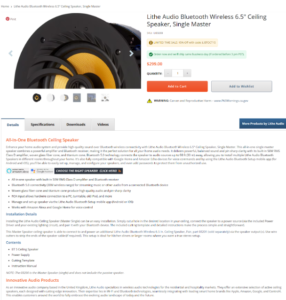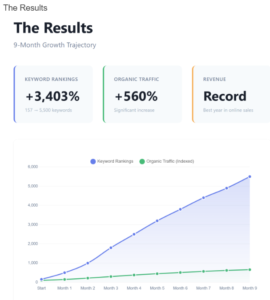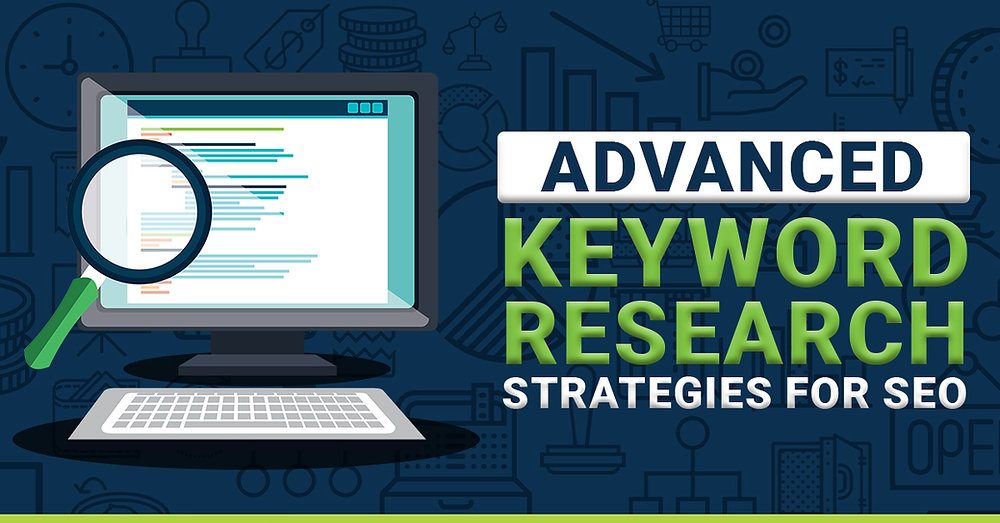Ecommerce SEO in 2026 focuses on helping both people and AI systems easily understand and trust your products. Shoppers now use tools like Google, ChatGPT, and Gemini to research, compare, and purchase within conversational interfaces. Clear structured data, accurate content, and consistent branding determine which stores appear in these results. Brands that prioritize clarity and credibility will earn visibility across every search and AI platform.
1. Why Ecommerce SEO Still Matters in 2026
Search habits have evolved dramatically, but the need for online visibility has not disappeared. It’s simply moved upstream into new ecosystems. Shoppers today don’t limit themselves to search engines. They interact with conversational tools, browse generative summaries, and buy directly inside chat environments.
Instead of typing “best smart home thermostat,” they ask ChatGPT, “buy smart home thermostat under $200.” They’re using OpenAI’s Buy It in ChatGPT to compare prices and finalize purchases without ever opening a browser tab. That shift means ecommerce SEO in 2026 isn’t just about being indexed; it’s about being understood by the AI systems shaping those conversations.
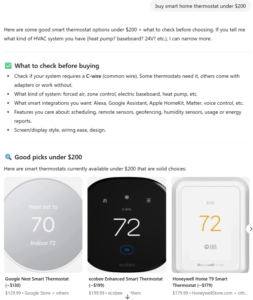
Modern SEO has merged with Answer Engine Optimization (AEO), a strategy focused on teaching AI models how to interpret your data, rather than just crawl it. Where traditional SEO relied on backlinks and keyword density, 2026 ecommerce SEO depends on factual accuracy, entity clarity, and trust signals that make your brand citable in AI summaries.
The goal is to train search and AI systems to see your store as a reliable authority on your niche. When your structured data, product schema, and review consistency reinforce that trust, your products begin to surface organically across multiple environments, including Google, Bing, ChatGPT, Gemini, and even smart home devices.
2. What Is Ecommerce SEO?

Ecommerce SEO in 2026 is the process of optimizing an online store so that its product pages, category collections, and supporting content appear visibly and accurately across both traditional search engines and AI-powered discovery systems. It blends the structure of technical SEO, the storytelling of content marketing, and the precision of data optimization, all to help potential buyers find exactly what they need faster.
In 2026, ecommerce SEO isn’t just about keywords; it’s about creating an interpretable digital storefront. That means every part of your site, from navigation to product schema, must speak fluently to both humans and algorithms. Google’s crawlers, Bing’s product feeds, and AI systems like ChatGPT, Gemini, and Perplexity all rely on structured cues such as JSON-LD markup, entity relationships, and consistent metadata to understand what your brand sells and why it’s credible.
For example, if someone asks an AI assistant, “What’s a good organic shampoo under $25?”, the assistant scans sources with verified product data, availability, and trustworthy reviews. A store that uses proper schema and consistent product naming conventions is far more likely to be cited in that recommendation, sometimes even before the shopper visits a search result.
Beyond discovery, ecommerce SEO affects conversions. When shoppers find your site, they expect speed, structure, and trust. Fast loading times, clear product hierarchies, and easy-to-scan pages reduce friction and improve both rankings and sales. Meanwhile, consistent reviews and verified ratings increase the likelihood that AI systems and search algorithms interpret your store as a reliable authority within its niche.
3. The Core Pillars of Ecommerce SEO
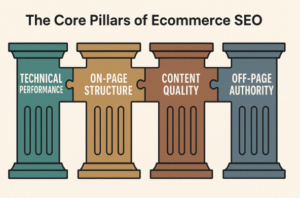
Even as algorithms and AI assistants evolve, the foundation of 2026 ecommerce SEO still rests on four interlocking pillars: technical performance, on-page structure, content quality, and off-page authority. Together, they form the backbone of visibility, trust, and conversion readiness.
These pillars haven’t disappeared. They’ve simply matured. In 2026, they’re as much about clarity for machines as usability for humans.
a. Technical SEO: Building a Crawlable, Reliable Storefront
Technical SEO ensures that your website functions seamlessly, both for shoppers and for search crawlers. A technically sound site loads quickly, displays correctly across devices, and presents structured information that search engines and AI tools can easily interpret.
- Use HTTPS and secure hosting to build trust and meet compliance requirements.
- Monitor Core Web Vitals, like Largest Contentful Paint (LCP), Interaction to Next Paint (INP), and Cumulative Layout Shift (CLS) to maintain speed and stability.
- Maintain a clean URL structure and an organized sitemap for efficient crawling.
- Audit internal links and redirect chains to avoid crawl waste and broken paths.
- Use robots.txt wisely to control what gets indexed and prevent duplicate content.
A healthy technical foundation also includes accessibility. AI systems increasingly prioritize inclusive design, so features like high contrast, image alt text, and screen-reader support indirectly boost SEO performance.
b. On-Page SEO: Structuring for Clarity and Relevance
On-page optimization shapes how search engines and AI models interpret each product or page. Every product should have its own unique metadata, headers, and internal linking pattern.
- Write unique title tags that include brand, product, and intent keywords.
- Use meta descriptions that summarize benefits and prompt clicks.
- Organize pages with H2s and H3s that align with user intent (“Features,” “Specs,” “Reviews,” “FAQs”).
- Interlink related products, categories, and blog posts to guide crawlers and customers.
- Use structured headings and concise copy for both AI parsing and readability.
This structure is for both Google and AI models to scan your site for data accuracy and context.
c. Content Optimization: Teaching AI and People Simultaneously
Ecommerce content optimization now means optimizing for comprehension, not just keywords. Search engines and AI systems both prefer content that is factual, scannable, and written in natural language.
- Include FAQs, comparisons, and tutorials within product or category pages.
- Use schema markup (Product, Review, FAQ, Breadcrumb) to reinforce meaning.
- Integrate multimedia, such as videos, transcripts, or image galleries, to enrich the user experience.
- Keep product copy conversational yet specific to maintain trust and accuracy.
- Refresh content quarterly to reflect updated specs or seasonal changes.
Think of your content as training data for AI models: the clearer and more structured it is, the more likely it gets cited in AI summaries or shopping panels.
d. Off-Page SEO: Earning Trust and Authority
Authority no longer comes just from backlinks. It’s now built through digital reputation. AI and search algorithms measure consistency across the web to determine reliability.
- Collect verified customer reviews and highlight them using Review schema.
- Earn backlinks from niche-relevant publications, suppliers, and local directories.
- Partner with ethical outreach platforms to build high-quality link profiles.
- Maintain consistent business listings (NAP: Name, Address, Phone) across directories.
- Engage in thought leadership. Publish studies, guides, or interviews that get cited organically.
Off-page SEO now acts as your brand’s trust layer, the signal that tells both AI systems and search engines you’re reliable, consistent, and worth recommending.
4. Keyword Research That Works in 2026
Keyword research in 2026 is no longer about finding the highest-volume phrases. It’s about uncovering the intent behind every query and mapping it to how people (and AI systems) actually search.
The old keyword model was transactional: find keywords, write content, rank.
The new model is behavioral and conversational. Search is now distributed across browsers, apps, and AI ecosystems, which means your keyword strategy must serve traditional search engines and generative ones simultaneously.
Understanding How Search Has Changed
When a customer in 2018 typed “best winter jackets”, Google returned a list of blog posts and shopping ads. In 2026, that same user might ask ChatGPT, “What are the best insulated winter jackets under $150 for hiking?”
The AI doesn’t just scan for keywords. It analyzes entities (brands, materials, prices, contexts) and looks for structured data that answers every part of that question.
That means keyword research is about building semantic coverage around buyer needs. Every ecommerce keyword cluster should now address:
- Who it’s for: the buyer persona or situation (e.g., “for kids,” “for beginners,” “for travelers”)
- What they want: the product function or category (e.g., “running shoes,” “cordless drills”)
- Why it matters: the modifier that signals intent (e.g., “eco-friendly,” “affordable,” “best-rated”)
- Where it’s asked: the discovery platform (Google, ChatGPT, Gemini, voice assistant)
When your keyword strategy covers those layers, your content is easier for AI and search algorithms to categorize and recommend.
How to Research Keywords in the AI Era
Modern tools like ChatGPT, AlsoAsked, Semrush, and Google Trends are still essential, but they’re now just part of a wider toolkit.
Pair them with AI query simulation, where you type real questions into AI chatbots to see how they respond. The terms, phrasing, and entities that appear in those answers are clues to how models interpret your niche.
For example:
- Ask “What’s the best organic dog shampoo?”
- Note which brands, price ranges, and product attributes appear in the response.
- Build keyword clusters around those entities (e.g., “organic aloe dog shampoo,” “vegan pet shampoo,” “dog shampoo under $20”).
These conversational clusters inform both your on-page copy and your structured data.
Entity-based keyword mapping also matters. Instead of focusing on individual keywords, you’ll map your product line to a web of related concepts.
For instance:- Entity: “stainless steel cookware”
- Related attributes: “non-toxic,” “oven safe,” “PFOA-free,” “dishwasher safe”
- Supporting content: “how to clean stainless steel pots,” “is stainless steel cookware non-stick?”
This structure helps AI engines associate your products with the right queries, even when those queries aren’t exact matches.
Navigating AI Overviews and Zero-Click Results
Google’s AI Overviews often summarize answers without showing traditional listings. To stay visible in that environment, you need content that’s clear, factual, and easily cited by AI.
Learn how to optimize for keywords that don’t trigger AI Overviews. This method helps you capture searchers who scroll below the AI box, ensuring steady organic traffic even when generative summaries dominate the page.
Organizing Keyword Data
Once you’ve identified conversational and entity-based clusters, map them in a spreadsheet or tool like Surfer SEO’s Keyword Planner.
Each cluster should contain:- Primary keyword (the product or category term)
- Secondary modifiers (use case, audience, price, or feature)
- Supporting questions (FAQs or blog post ideas)
- Entity connections (materials, brands, or properties)
Example:
Cluster: “Best beginner mountain bikes 2026”
- Primary: beginner mountain bikes
- Secondary: trail-ready, under $1,000, lightweight aluminum
- Questions: “What’s the best mountain bike for teens?” / “Are carbon bikes worth it?”
- Entities: Giant, Trek, Cannondale, Shimano
Now your keyword clusters inform everything from product copy to FAQ schema, feeding both human readers and AI understanding.
5. Product Page Optimization: Beyond Titles and Tags
A product page in 2026 is a data-rich asset that tells both humans and algorithms why your product deserves attention.
While traditional SEO focused on metadata and keyword placement, modern ecommerce SEO focuses on completeness, clarity, and contextual depth. Every product page should function like a micro-knowledge base that answers every potential buyer question before they even ask it.
Write Product Copy That Speaks to Intent
Forget generic “high-quality” descriptions. Buyers and AI systems both crave specificity and natural language.
Start by answering the core questions a shopper (or chatbot) might ask:
- What does this product do?
- Who is it for?
- Why is it better than alternatives?
- What’s in it (materials, ingredients, dimensions)?
- How can I use or care for it?
Example: Instead of “Our ceramic pan is durable and stylish,” write:
“This non-stick ceramic frying pan is oven-safe up to 500°F and designed for even heat distribution, perfect for everyday meals or professional kitchens.”
That kind of descriptive phrasing contains the attributes AI models rely on (materials, purpose, specifications) and the confidence users need to buy.
Use conversational tone + factual precision.
AI models weigh factual language more heavily than sales fluff. Phrases like “crafted with,” “made for,” “includes,” or “features built-in” are more reliably interpreted than adjectives like “amazing” or “luxurious.”
Implement Structured Data and Schema
Structured data is the invisible power source of ecommerce SEO. Schema markup tells Google and AI exactly what your page contains, helping your product appear in rich results, AI summaries, and shopping comparisons.
At minimum, include these JSON-LD schema types on every product page:
- Product Schema: Name, description, SKU, brand, material, and color.
- Offer Schema: Price, currency, availability, and condition (new/used).
- AggregateRating Schema: Average star rating and total review count.
- FAQ Schema: Two to three short Q&A entries based on buyer concerns.
- Breadcrumb Schema: Page hierarchy for improved navigation and AI comprehension.
When properly applied, schema helps your listings gain visibility in:
- Google Shopping results
- AI Overview product panels
- ChatGPT plugin recommendations
- Visual search carousels and voice responses
Visual Optimization for AI and Human Users
Images now play an even bigger SEO role thanks to visual search and multimodal AI models.
Google Lens, ChatGPT’s image capabilities, and Perplexity’s product recognition all rely on how your visuals are labeled.
Follow this checklist for optimal image SEO:
- Use descriptive filenames (e.g., stainless-steel-water-bottle-20oz.jpg instead of IMG_1033.jpg).
- Write alt text that explains the product and context (e.g., “20-ounce stainless steel water bottle with bamboo lid on marble counter”).
- Compress files to keep load times under 2 seconds.
- Add multiple angles and lifestyle shots. (AI models learn better from varied perspectives.)
- Embed EXIF metadata for brand and category when possible.
Also, consider creating short 5–10 second videos or looping product animations. These not only increase engagement but are also interpreted by AI systems that scan transcripts and captions.
Optimize Internal Linking and Context
A product page should never exist in isolation. Internal linking helps distribute ranking power and gives AI engines context about related categories.
Examples:
- Link each product to its parent category and related products.
- Add contextual links like “Shop matching accessories” or “See all eco-friendly cookware.”
- Cross-link to relevant blog content (e.g., “Read our guide to non-toxic cookware materials”).
Internal linking creates semantic relationships that reinforce your topical authority.
6. Content Marketing That Drives Sales and Search Visibility
Content marketing is the connective tissue between discovery and conversion. In ecommerce, your content doesn’t just attract searchers. It convinces them to trust, compare, and buy. By 2026, the most successful online stores act like publishers: they educate first, sell second.
Traditional product pages alone can’t capture all stages of the buyer journey. That’s where ecommerce content optimization bridges the gap. From category guides to how-to videos, your content gives AI and human visitors the context they need to understand your products, and your authority.
This is where transactional SEO becomes crucial. It’s the strategy that turns educational content into revenue-driven assets by aligning your keyword targets, product schema, and conversion intent. Instead of stopping at visibility, transactional SEO helps you design content that both ranks and sells, especially in AI-driven shopping environments.
Turn Your Store Into a Knowledge Hub
The highest-performing ecommerce brands create content ecosystems around their products. For example:
- A skincare brand publishes a “Guide to Building a Routine for Sensitive Skin” that links to its product line.
- A fitness equipment retailer posts “How to Set Up a Home Gym in Small Spaces,” embedding links to individual weights and benches.
- A pet supply shop releases “Top 10 Eco-Friendly Dog Toys” that include shoppable links and product schema.
This type of content does double duty:
- It builds topical authority in search results.
- It trains AI systems to associate your brand with specific buyer intents and categories.
Each new piece of content creates additional data points that generative search engines use to decide whether to feature your site in their summaries.
Balance Education, Authority, and Conversion
To rank and convert, every content type (blogs, guides, videos, or FAQs) should meet three objectives:
- Inform clearly. Use plain language and factual statements that AI systems can parse easily.
- Demonstrate expertise. Cite reputable sources, use real data, and explain product nuances.
- Lead naturally to purchase. Add contextual CTAs like “View our sustainable line” or “Compare the full collection.”
Avoid hard selling. AI models prefer citing impartial, educational sources. The more balanced your tone, the more likely your content will appear in AI responses and featured snippets.
Leverage Multimodal Content for AI Visibility
Modern search engines are multimodal. They process text, images, video, and audio together. That means your content strategy should be, too.
- Publish videos with transcripts (AI reads the text).
- Add infographics with alt text describing data points.
- Embed audio product explainers for accessibility.
- Summarize content sections with key bullet takeaways (these often appear in voice results).
When you create multimodal assets, you expand your potential visibility in search results, voice assistants, and AI-driven discovery apps.
Use Internal Linking to Reinforce Context
Every piece of content should support and connect to your core categories and products. For example:
- Blog: “How to Choose the Right Air Purifier” → Links to “HEPA vs Carbon Filters” blog and air purifier product pages.
- Guide: “Best Kitchen Tools for Small Apartments” → Links to cookware and organization categories.
These internal connections not only improve SEO structure but also help AI interpret your site’s topical clusters.
Refresh and Recycle High-Performing Content
In 2026, freshness is a major ranking and trust factor for both Google and AI engines. Revisit your best-performing content quarterly. Update stats, add new visuals, or expand FAQs to reflect current product versions. AI systems like ChatGPT and Gemini prioritize recently updated information when generating summaries
7. AI and Answer Engines: The New Frontier of Ecommerce SEO
The rise of generative AI has redefined how people shop online. In 2026, the customer journey no longer starts with a search bar; it starts with a conversation.
From ChatGPT’s shopping integrations to Google’s generative overviews and Gemini’s in-chat purchase prompts, ecommerce has entered a phase where AI recommendations drive more product discovery than search results ever did.
That shift demands a new optimization mindset: one built on accuracy, transparency, and structured data rather than ranking positions.
How AI Changed the Shopping Funnel
When OpenAI launched “Buy It in ChatGPT”, it introduced the first true conversational shopping experience. Users could describe what they wanted—“a sustainable backpack under $120 with laptop storage”—and the AI would present product options, reviews, and prices directly in-chat.
Similarly, Google’s AI Overviews summarize top products using structured data, while Perplexity AI cites ecommerce brands with clear descriptions, verified stock, and factual consistency. In all of these systems, your visibility depends less on rankings and more on recognition.
AI engines extract your product information, compare it with competitors, and decide whose data is most trustworthy to include in their answer set. If your data is incomplete, inconsistent, or exaggerated, your products won’t be cited, no matter how good your SEO used to be.
Why Structured Data Is Now a Necessity
Structured data has become the language of generative discovery. Without it, AI models can’t confidently interpret or display your products.
Include these key schema types across all relevant pages:- Product Schema: Defines core attributes (name, SKU, color, size, material).
- Offer Schema: Lists price, currency, and availability.
- Review Schema: Adds social proof and credibility.
- FAQ Schema: Answers buyer questions to feed conversational results.
- Breadcrumb Schema: Clarifies hierarchy for AI context-building.
Every schema field you complete makes it easier for AI systems like ChatGPT, Gemini, or Bing Copilot to pull your data accurately into their shopping recommendations.
Data Integrity: The New Ranking Factor
AI engines are extremely sensitive to data inconsistencies. If your product price, description, or availability differs across your website, Google Shopping, and third-party marketplaces, the AI is less likely to recommend you.
Think of data integrity as the new PageRank.
Your product feed must be uniform across:- Your ecommerce site
- Google Merchant Center
- Amazon, Etsy, or Shopify integrations
- Structured product APIs or feeds
- Third-party review platforms
Synchronizing this information tells AI systems that your store is reliable, a key metric for inclusion in conversational recommendations.
What Generative Engines Actually Reward
A Search Engine Land analysis of ChatGPT Shopping and Ecommerce SEO revealed that generative engines prioritize:
- Factual precision over keyword density
- Consistent pricing and stock across all channels
- Authentic reviews with verifiable purchase histories
- Neutral tone and clarity (AI avoids biased or overly promotional language)
In other words, ecommerce SEO is now about teaching AI to trust you.
Your structured data, verified reviews, and consistent brand messaging form a trust signal that determines where, and if, you appear in generative results.
8. Case Study: Surfer SEO’s 3,403% Growth Example
Surfer SEO’s ecommerce content optimization case study shows how structured SEO drives tangible ROI.
The Challenge
An ecommerce client had only 157 ranking keywords and minimal blog presence.
The Strategy
SEO consultant Peter Rota executed a three-part optimization plan:
- Audit: Repaired internal links and optimized titles.
- Expansion: Added 5–6 new blogs monthly using Surfer’s Topical Map.
- On-Page Refinement: Increased content scores using semantic keywords and schema integration.
The Results
After nine months:
- Keyword rankings: +3,403% (from 157 → 5,500).
- Organic traffic: +560% increase.
- Revenue: Record-breaking year in online sales.
The takeaway: consistent, structured optimization outperforms ad-spend reliance.
Key Takeaways
- AI is rewriting ecommerce discovery. Shoppers find and purchase products through conversational tools, not just search engines.
- Structured data is your foundation. Schema markup ensures your product details are readable by AI and search algorithms alike.
- Generative visibility matters. You must appear in AI summaries, chat recommendations, and voice search results, not just organic listings.
- Content must be conversational and factual. AI tools reward clarity, transparency, and human-sounding language.
- Ecommerce content optimization is hybrid. Success depends on optimizing for people, algorithms, and answer engines all at once.
10. FAQs About Ecommerce SEO in 2026
What’s new about ecommerce SEO in 2026?
SEO now extends beyond Google rankings. Ecommerce brands must optimize for AI discovery, ensuring structured, factual data that generative engines like ChatGPT and Gemini can cite confidently.
Does AI-generated content still rank?
Yes, if it’s edited for accuracy and tone. AI-assisted content performs best when reviewed by humans to ensure it sounds natural and matches search intent.
Should small stores use structured data?
Absolutely. Schema markup helps smaller brands appear in AI summaries and shopping panels by making product data clear, trustworthy, and machine-readable.
How long until results appear?
Expect 3–6 months for steady organic growth, though AI visibility can improve faster once structured data and consistent content are in place.
Are backlinks still important?
Yes, but relevance matters more than volume. High-quality, industry-specific backlinks build authority for both AI and search algorithms.
How do I track AI visibility?
Check Google’s AI Overview metrics, segment AI referrals in GA4, and occasionally test prompts in ChatGPT or Gemini to see if your brand appears.
Do reviews impact rankings?
Yes. Verified reviews strengthen credibility and help your products appear in AI results and rich snippets when marked up with Review schema.
How should I handle duplicate products?
Use canonical tags and unique copy for each variant. Distinguish items by size, color, or material to avoid merging in search and AI listings.
Conclusion: Future-Proof Your Store for AI-Driven Search
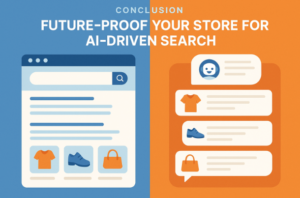
Ecommerce SEO in 2026 blends traditional optimization with AI readiness. Success now depends on how clearly your data communicates with both people and machines.
Structured data, consistent product information, and conversational content are the foundation. The more transparent your product details and brand voice, the more likely you’ll appear in Google’s AI Overviews, ChatGPT recommendations, and other generative results that shape buyer decisions.
Think of your SEO not as “ranking for keywords,” but as training algorithms to trust your store. Maintain accurate pricing and availability across all channels, validate schema regularly, and refresh your top content often.
The brands that win in this era will be those that combine human authenticity with machine clarity, building credibility that spans both search engines and answer engines. When your ecommerce site speaks both languages fluently, you won’t just be found. You’ll be recommended.

